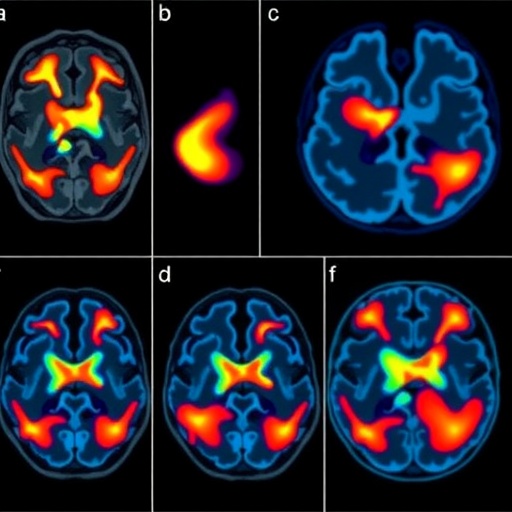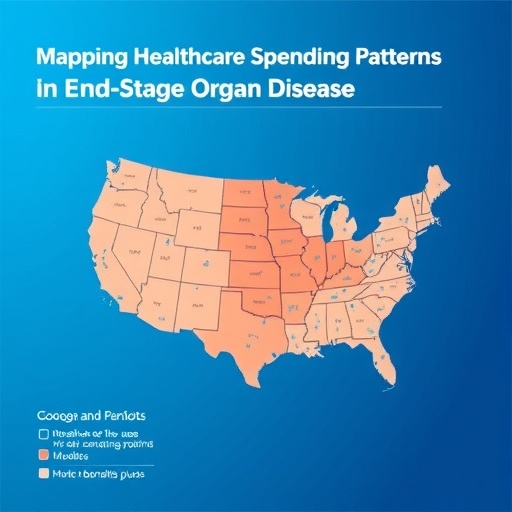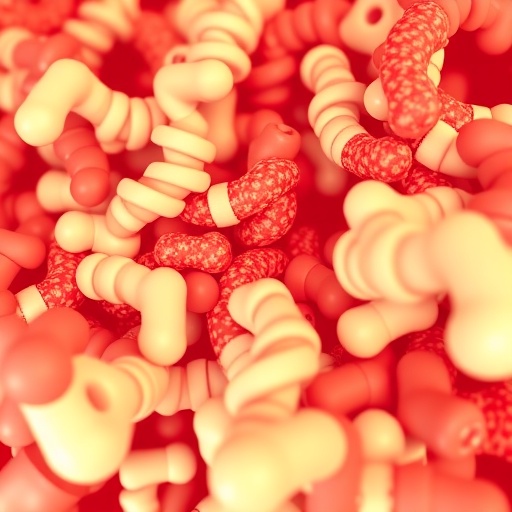In a groundbreaking study poised to reshape our understanding of Parkinson’s disease (PD), researchers have delved deep into the enigmatic tremors that afflict millions worldwide. Tremors, particularly resting and action tremors, are hallmark symptoms of PD, often rendering patients incapacitated and severely impacting their quality of life. This new research, leveraging the power of long-term subthalamic nucleus deep brain stimulation (STN-DBS), illuminates the distinct pathophysiological underpinnings of these tremor types and hints at future therapeutic directions.
Parkinson’s disease, a progressive neurodegenerative disorder, is primarily known for motor symptoms such as bradykinesia, rigidity, and tremor. Among these, tremors manifest in two forms: resting tremors that appear when muscles are relaxed, and action tremors that occur during voluntary movement. Prior to this study, while resting tremor was well-characterized, the mechanisms driving action tremors remained elusive, complicating treatment strategies.
The study, conducted by Zampogna et al., opens new avenues by integrating long-term STN-DBS recordings and clinical observations to distinguish the subtle yet crucial differences between resting and action tremors. STN-DBS, a neurosurgical intervention involving the implantation of electrodes in the subthalamic nucleus, has revolutionized PD management by alleviating motor symptoms. However, its long-term effects and the neural signatures it modulates have not been thoroughly analyzed until now.
One of the pivotal revelations in this study is the differential response of resting versus action tremors to continuous STN-DBS therapy. While resting tremors displayed significant attenuation, action tremors exhibited a more complex and variable response, suggesting divergent neural circuitries and pathophysiological mechanisms. This finding challenges previous assumptions that both tremor types share a common origin, emphasizing the need for tailored DBS parameters.
Electrophysiologically, the research unraveled that resting tremors correlate with oscillatory activity predominantly within the beta frequency range (~13-30 Hz) in the subthalamic nucleus. Contrastingly, action tremors engage broader motor circuits, implicating cortico-subcortical loops and possibly cerebellar pathways. This nuanced understanding stems from long-term neural recordings analyzed during different motor states, lending unparalleled insight into tremor dynamics over time.
Furthermore, the study’s longitudinal aspect is particularly noteworthy. Most previous investigations captured brain activity during limited time windows, but Zampogna and colleagues tracked patients over extended periods, capturing the evolution and adaptation of tremor physiology under continuous DBS. This approach highlights how neural networks progressively reorganize in response to chronic stimulation, potentially revealing mechanisms underlying DBS tolerance or diminishing efficacy in some cases.
Clinically, these findings carry profound implications. Recognizing that action tremors may derive from distinct neural nodes suggests that current DBS settings, optimized for resting tremors, might require adjustment or combination with other neuromodulatory techniques to address action tremors effectively. This could revolutionize personalized therapy, enabling clinicians to fine-tune DBS parameters based not just on symptom presence but on detailed neurophysiological signatures.
The research also underscores the critical role of advanced neuroimaging and electrophysiological monitoring in PD management. By integrating these technologies, clinicians can now visualize the intricate pathways involved in different tremor phenomenologies, informing both surgical target selection and postoperative programming. The potential for closed-loop DBS systems that respond dynamically to real-time neural markers looms on the horizon, promising hefty improvements in symptom control.
Beyond therapeutic innovation, the insights gained here enrich our broader understanding of basal ganglia function and dysfunction. The subthalamic nucleus emerges as a critical hub coordinating motor activity via multiple oscillatory patterns, interacting with cortical and cerebellar circuits differently depending on motor state. This knowledge could influence research into other movement disorders and neuropsychiatric conditions sharing overlapping circuitry abnormalities.
Importantly, the study also grapples with the heterogeneous nature of Parkinson’s disease itself. Given the variability in symptom presentation and progression, identifying biomarkers that differentiate tremor types can aid in more precise disease phenotyping. Such stratification is essential for clinical trials and the development of subtype-specific treatments, tackling the disease with greater sophistication.
Methodologically, Zampogna et al.’s approach exemplifies cutting-edge neuroscience, blending invasive neural recording with clinical evaluation and computational analysis. Their use of long-term data acquisition facilitates a robust understanding of tremor fluctuations, DBS effects, and potential compensatory mechanisms the brain adopts during sustained stimulation. This holistic view extends beyond snapshot observations common in prior research.
In light of these advances, future research is beckoned to explore combinatorial therapies incorporating STN-DBS with pharmacological agents targeting distinct oscillatory pathways implicated in action tremors. Additionally, adaptive DBS platforms incorporating machine learning algorithms to decode tremor type-specific patterns and adjust stimulation in real-time could transform patient outcomes substantially.
Despite the promising insights, challenges remain. The heterogeneity of tremor manifestations and individual neuroanatomical differences necessitate large-scale studies to validate and generalize findings. Moreover, integrating such complex neurophysiological data into everyday clinical practice requires streamlined protocols and clinician training, an endeavor that demands concerted efforts across disciplines.
Ultimately, this landmark investigation not only deepens the scientific community’s grasp of Parkinson’s tremors but also paves the way for more effective, personalized, and dynamic neuromodulation therapies. As the global burden of Parkinson’s disease continues to ascend, innovations stemming from this work hold transformative potential to enhance life quality and functional independence for countless affected individuals.
As ongoing research builds upon these findings, the prospect of fully elucidating the multisystem pathophysiology of Parkinsonian tremors draws nearer. The intertwining pathways of basal ganglia, cortex, and cerebellum now emerge with greater clarity, offering a roadmap for the next generation of therapeutic interventions that blend precision neuromodulation with a deep mechanistic understanding of brain networks.
The insights from Zampogna et al. mark a pivotal chapter in movement disorder neuroscience. They reaffirm that tackling complex neurological symptoms requires sustained interdisciplinary effort, innovative technology application, and most critically, a patient-centered approach that recognizes the diverse neural substrates contributing to Parkinson’s disease. With continued momentum, a new era of tremor management awaits just beyond the horizon.
Subject of Research: Pathophysiological mechanisms of resting and action tremors in Parkinson’s Disease using long-term subthalamic nucleus deep brain stimulation (STN-DBS)
Article Title: Resting and action tremor in Parkinson’s disease: pathophysiological insights from long-term STN-DBS
Article References:
Zampogna, A., Suppa, A., Patera, M. et al. Resting and action tremor in Parkinson’s disease: pathophysiological insights from long-term STN-DBS. npj Parkinsons Dis. 11, 284 (2025). https://doi.org/10.1038/s41531-025-01130-9
Image Credits: AI Generated
Tags: clinical observations in Parkinson’simproving quality of life for PD patientslong-term STN-DBS researchmotor symptoms in Parkinson’s diseaseneurodegenerative disorder symptomsneurosurgical interventions for PDParkinson’s disease tremorspathophysiology of tremorsresting and action tremorssubthalamic nucleus deep brain stimulationtherapeutic strategies for Parkinson’sunderstanding Parkinson’s disease mechanisms





